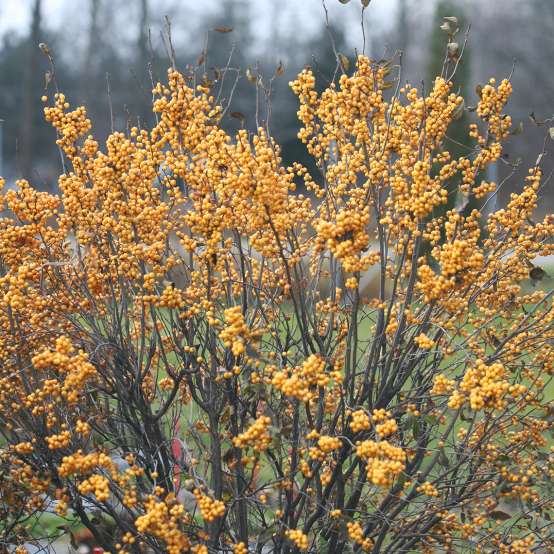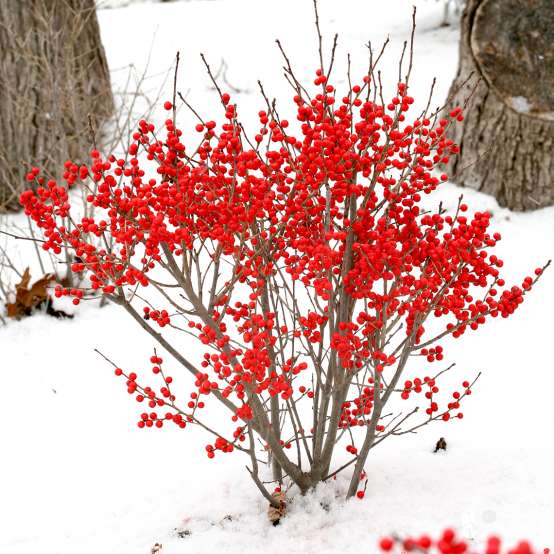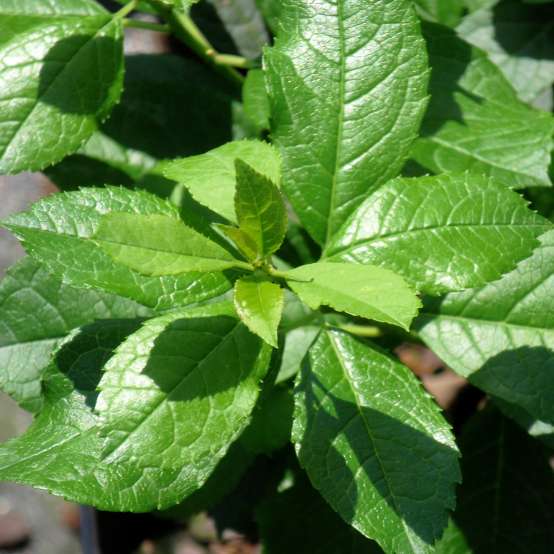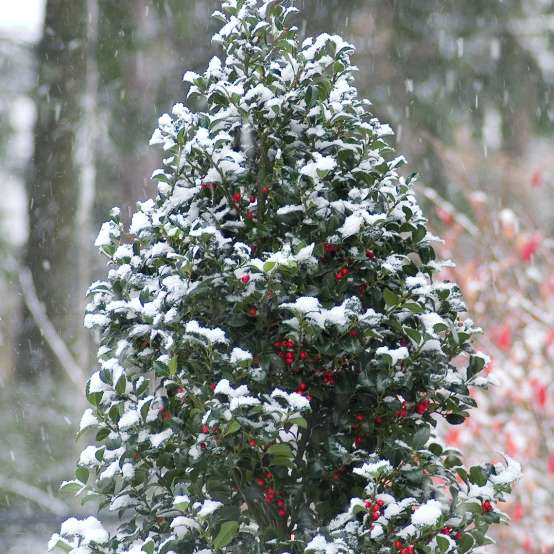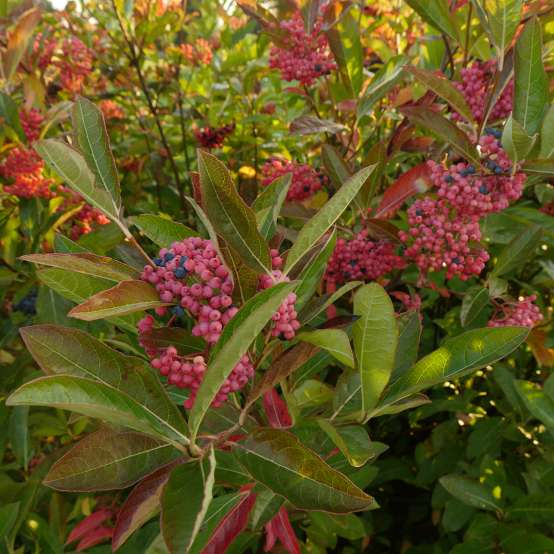Clicking the following controls will change the main image displayed above.
BERRY HEAVY®

Holly - Winterberry
Ilex verticillata
'Spravy'
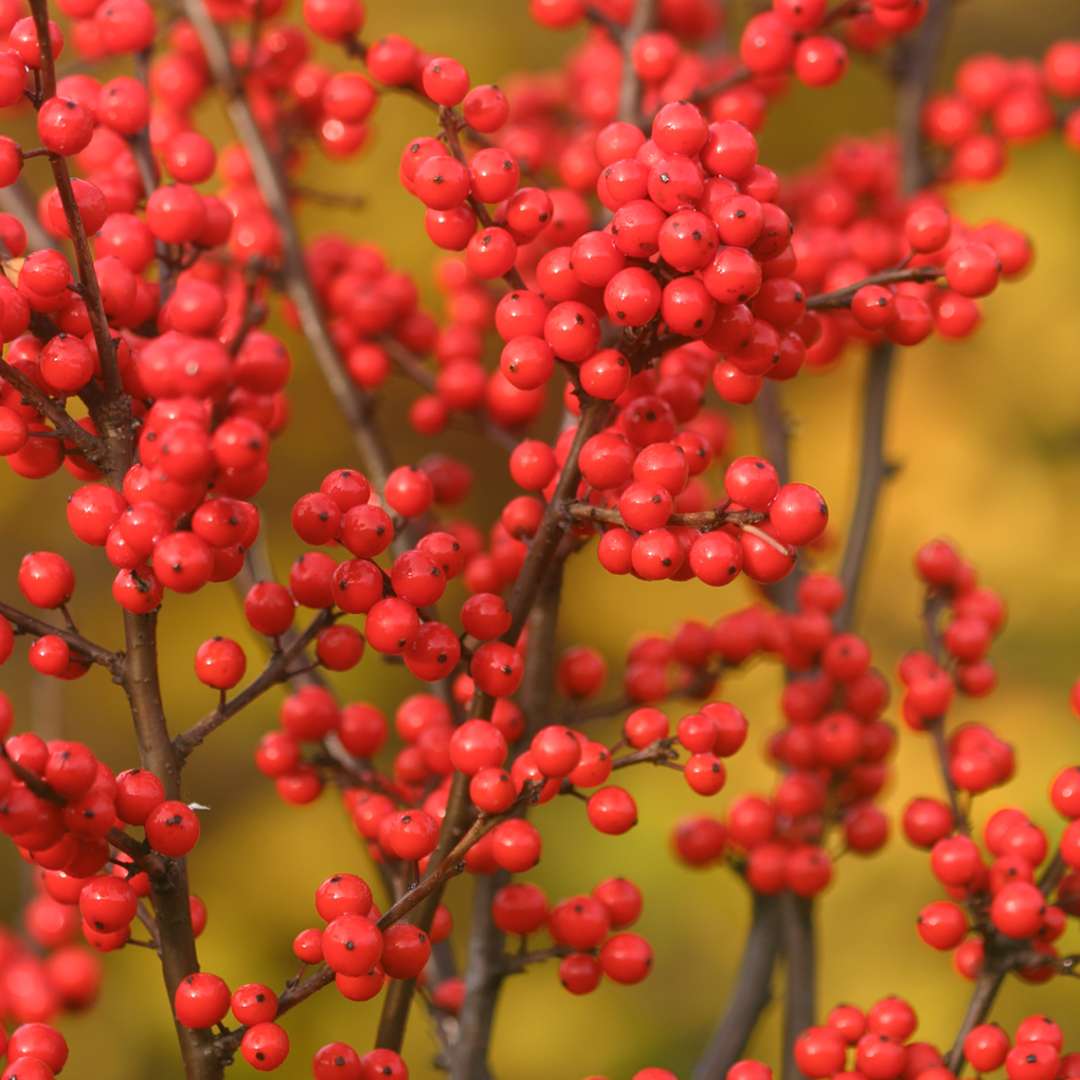
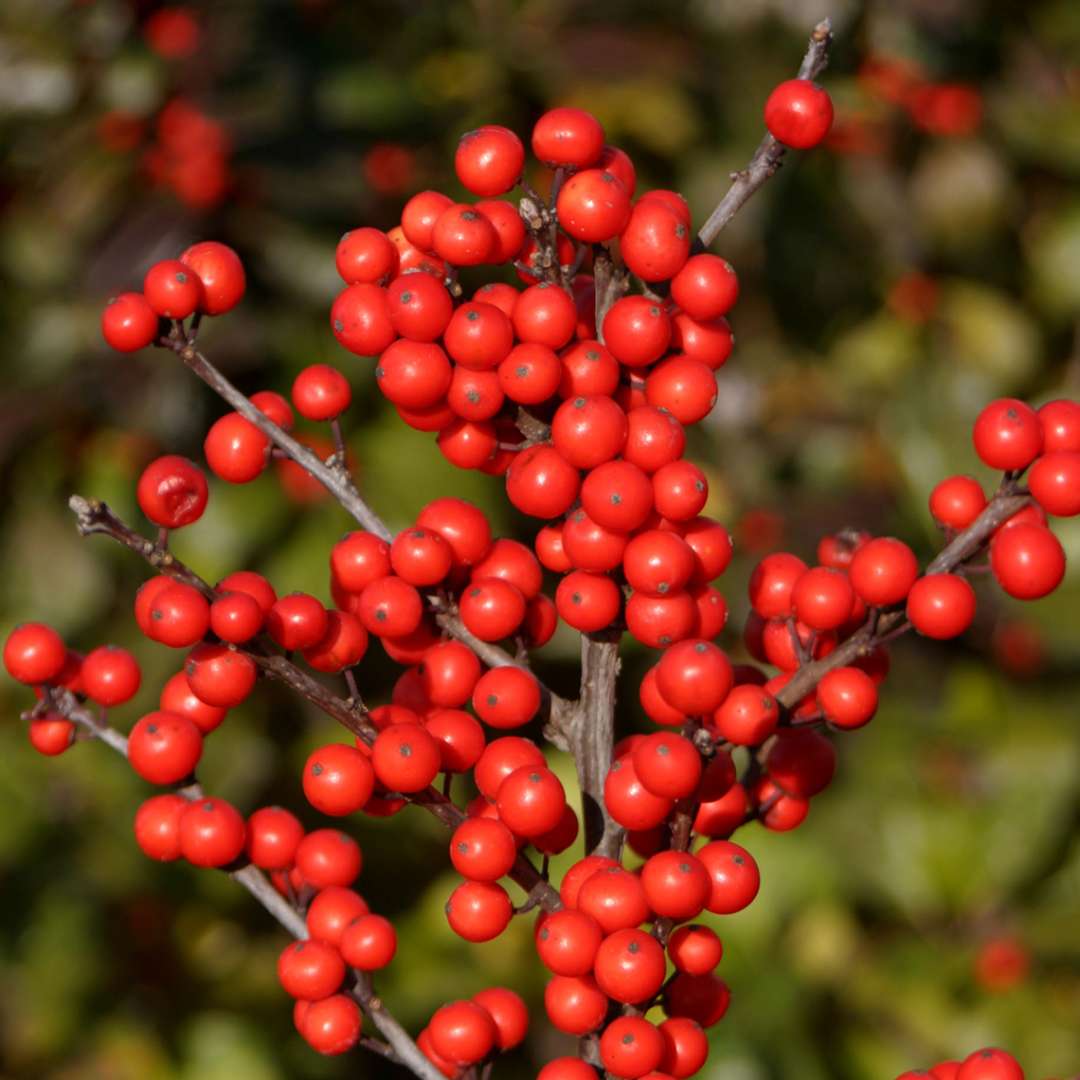
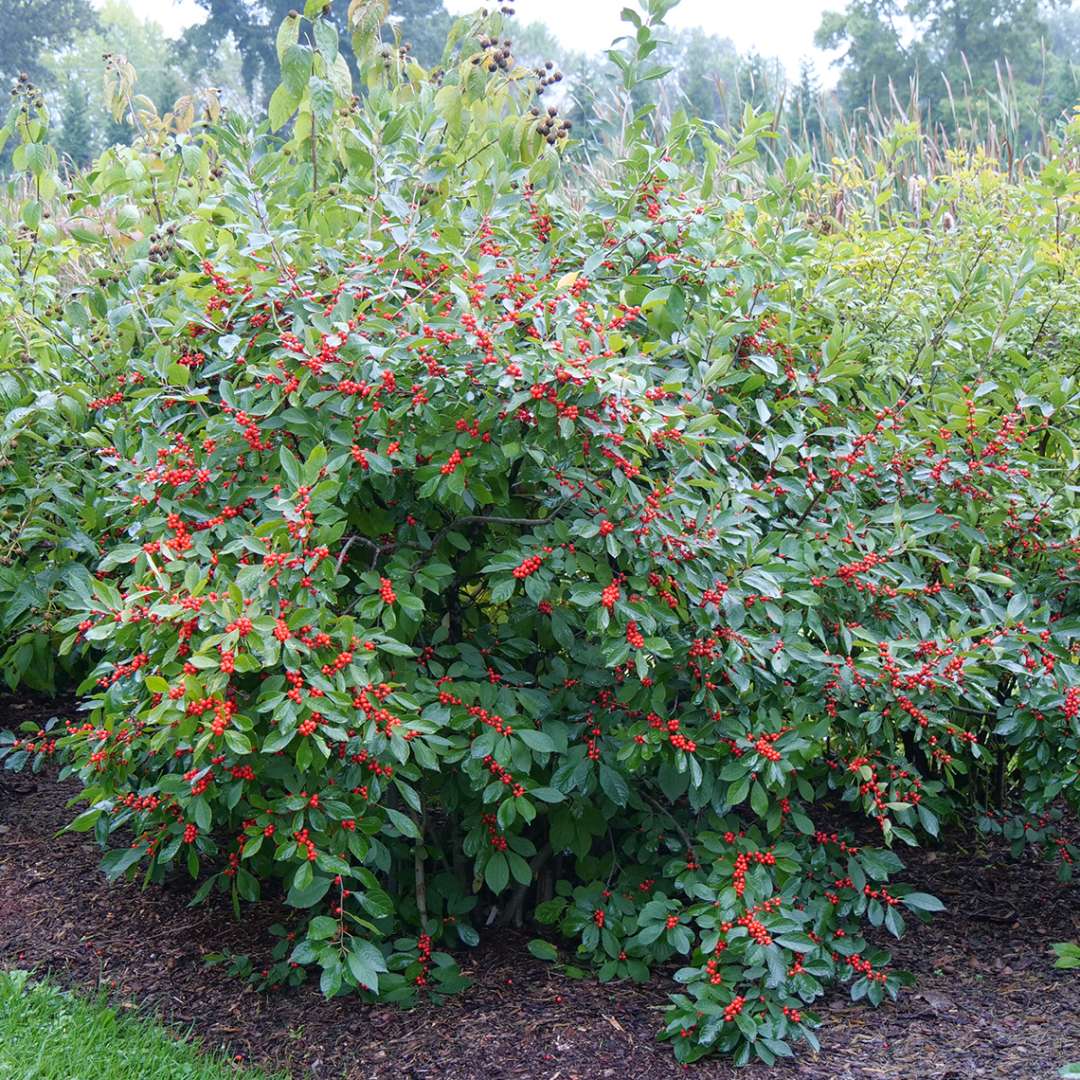
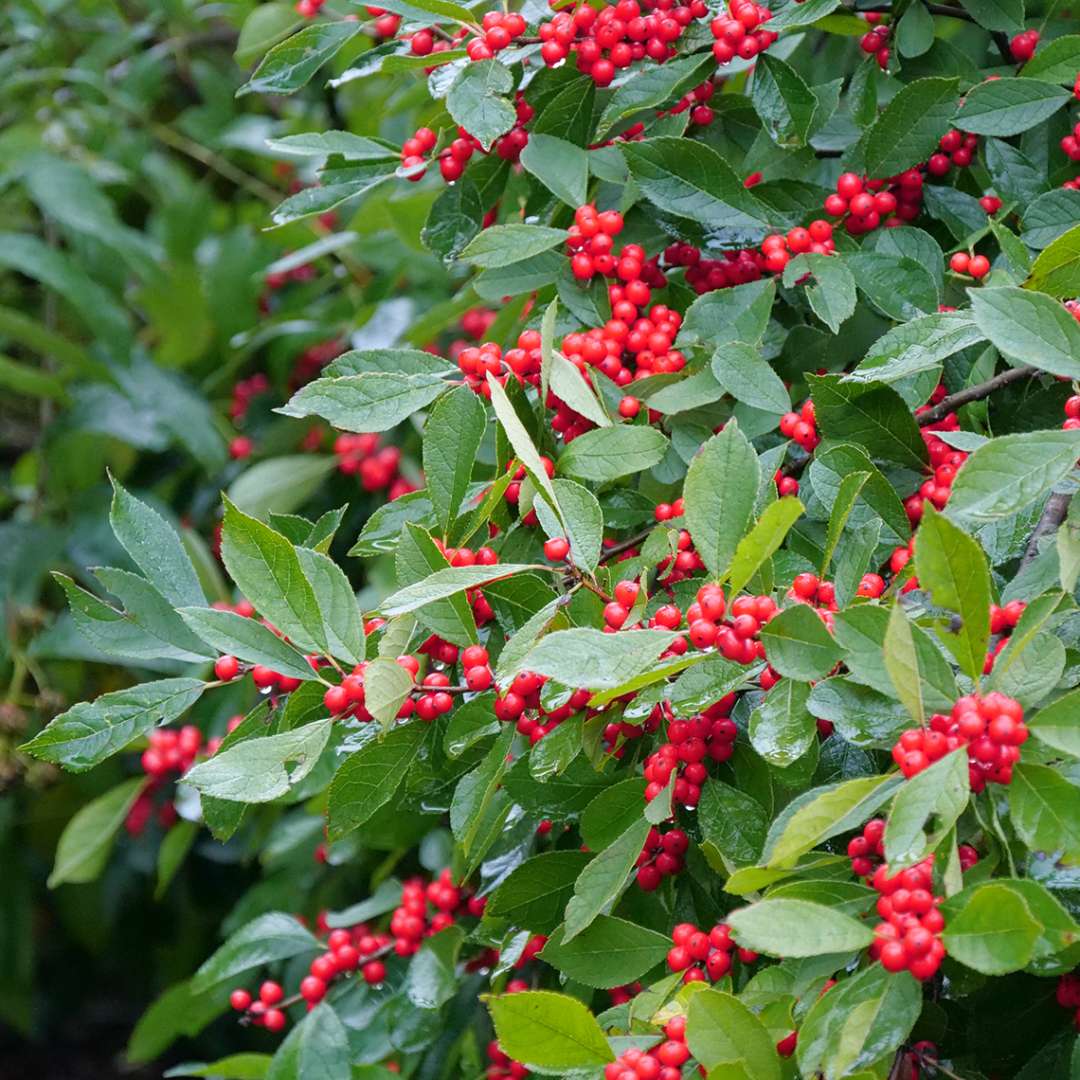
- Native to North America
- Very heavy fruit set
- Deer resistant
- Description
Brighten up the winter landscape with Berry Heavy® winterberry holly. This North American native shrub produces copious amounts of bright red berries to be enjoyed in fall and winter. The berries are not edible for humans, but birds will happily scoop them up when they soften in winter. Berry Heavy® winterberry holly attracts an abundance of pollinators, but deer aren’t interested in it. Use in mass plantings, wildlife gardens, or native gardens for a truly eye-catching winter display. The vibrant fruit looks great in floral and holiday arrangements. Berry Heavy® Ilex verticillata is a female selection and requires a male pollinator to produce berries; use Mr. Poppins® winterberry holly.
- USDA Zone
- 3 - 9 (-40°F/-40°C)
- Exposure
- Full sun, Part sun
- Height
- 6 - 8'
- Width
- 6 - 8'
- Finish Time
- 1.5 seasons
- Type
- Deciduous
- Bloom Time
- Spring
- Flower Color
- White
- Foliage Color
- Green
- Liner Sizes
- 2 1/4", 4", Quick Turn
General Care
Soil
Does best in moist (even very moist), slightly acidic soils, but can take average soils as well. Avoid high pH sites.Pruning
Winterberry holly blooms on old wood. However, pruning female varieties after blooming will remove any developing fruit, so pruning is not recommended except to remove entire branches in an effort to attain a specific form. Male varieties could be pruned after blooming, however, given the typically slow growth rate of winterberry hollies, pruning is not recommended for them either.Uses
Mass plantings; hedges; cutting gardens; wildlife gardens; natural areas.Growing Tips
One male plant will pollinate up to five females. Plant within about 50'/15.25m of one another to ensure pollination and good fruit set. Quite tolerant of shaded conditions; however, fruit set is best with at least 4 hours of sun each day.Features: Cut flower, Native, Winter interest, Attracts pollinators, Deer resistant, Clay soil
Filters: Botanical genus: Ilex, Common name: Holly - Winterberry, Retail program: Proven Winners® ColorChoice®, USDA Zone 3, USDA Zone 4, USDA Zone 5, USDA Zone 6, USDA Zone 7, USDA Zone 8, USDA Zone 9, Exposure: Full sun, Exposure: Part sun, Bloom time: Spring, White flowers, Green foliage
Features: Cut flower, Native, Winter interest, Attracts pollinators, Deer resistant, Clay soil
Filters: Botanical genus: Ilex, Common name: Holly - Winterberry, Retail program: Proven Winners® ColorChoice®, USDA Zone 3, USDA Zone 4, USDA Zone 5, USDA Zone 6, USDA Zone 7, USDA Zone 8, USDA Zone 9, Exposure: Full sun, Exposure: Part sun, Bloom time: Spring, White flowers, Green foliage

